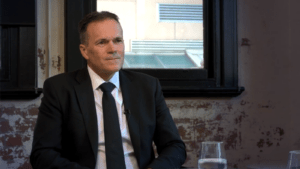Opportunities abound, but don’t let recency bias have the last laugh
As the page turns on the new financial year, we reflect on what was once again a significantly better result than many expected. Looking back 12 months, few predicted that most major global sharemarkets, including the Nasdaq and S&P 500, would re-enter a bull market, nor that major economies would remain so resilient in the face of relentless interest rate increases.
Both investors and advisers have the tendency to extrapolate recent events into the future, with our inherent recency bias central to this. But the last six months have shown why this is dangerous.
The biggest story of 2023 thus far is the significant outperformance of the technology sector, driven by the boom in artificial intelligence and resultant benefits to some of the largest companies in the world, such as NVIDIA, Apple and Microsoft. This outperformance came despite broad calls for the return of value investing and for investors to focus on more cyclical, traditional business as the rate cycle turned.
Among the more interesting pieces I’ve read in recent months was an extensive paper by the US Federal Reserve that very broadly suggested nearly all the returns generated by sharemarkets over the last three decades resulted from falling interest rates. This trend, the paper asserted, boosted corporate profits via lower borrowing costs and supported higher price-earnings multiples.
The release of this paper triggered an interest in assessing what lies ahead for investors, and advisers, for the rest of 2023. I’ve therefore put together five key issues that should be front of mind for those reviewing and building portfolios today.
The first – the growing uncertainty in unlisted asset valuations – is linked directly to movements in interest rates. By no means am I suggesting that the massive infrastructure, direct property, private equity and venture capital investments that dominate the balance sheets of industry funds and other professional investors are all overvalued. Rather, I’m suggesting investors be wary amid what will likely be a period of transition and volatility.
Consider for instance an investment property, say an industrial warehouse, purchased on an income of 4 per cent when term deposit rates were offering 1 per cent. With the low-risk alternative now offering the same yield, naturally the value of said asset must be lower.
While this may be oversimplifying matters, it’s clear there is something afoot as valuations across the listed property sector continue to fall and the regularity of major property assets selling at a discount to their carrying value increases.
A similar scenario emerges for private market investing, particularly venture capital, with Canva a case in point that attracts more than its fair share of attention. It is clear the valuations of the past are a long way away; that said, this doesn’t necessitate a significant reversal in fortunes in the very short-term.
The message here is really to tread carefully, and to make sure you have confidence in the valuations of the assets you are purchasing. In previous cycles, providing the capital to act opportunistically in this environment has tended to pay off.
This extends to the second challenge, the ‘rolling over’ of floating-rate fixed-income securities. Floating or variable-rate investments attracted the lion’s share of flows in 2023, as investors flocked to their inflation-hedging characteristics. However, with bond yields falling, there is a growing risk that both income and capital values fall should the outlook for the economy worsen, eventually triggering rate cuts.
Underscoring the message of recency bias are the growing calls that ‘active management is back’. Higher volatility, the wisdom goes, offers a better opportunity for active managers to outperform. Yet we know from the last few years, among the most volatile in history, that a rising tide does not lift all boats.
There clearly remains value in active management, yet history has shown many broad-based managers struggle to outperform consistently. A blend of both passive and active strategies will be key, particularly for retirees, and it’s as important as ever to ensure you are truly getting what you pay for on the active side.
The final point is that both advised and unadvised investors may be taking more risk than they need to. Higher interest rates have brought an entire asset class – fixed income and bonds – back into investability, yet these remain underweight and broadly misunderstood by most.
Central to any investment portfolio should be the focus on taking as little risk as possible to achieve one’s stated investment and income objectives.











